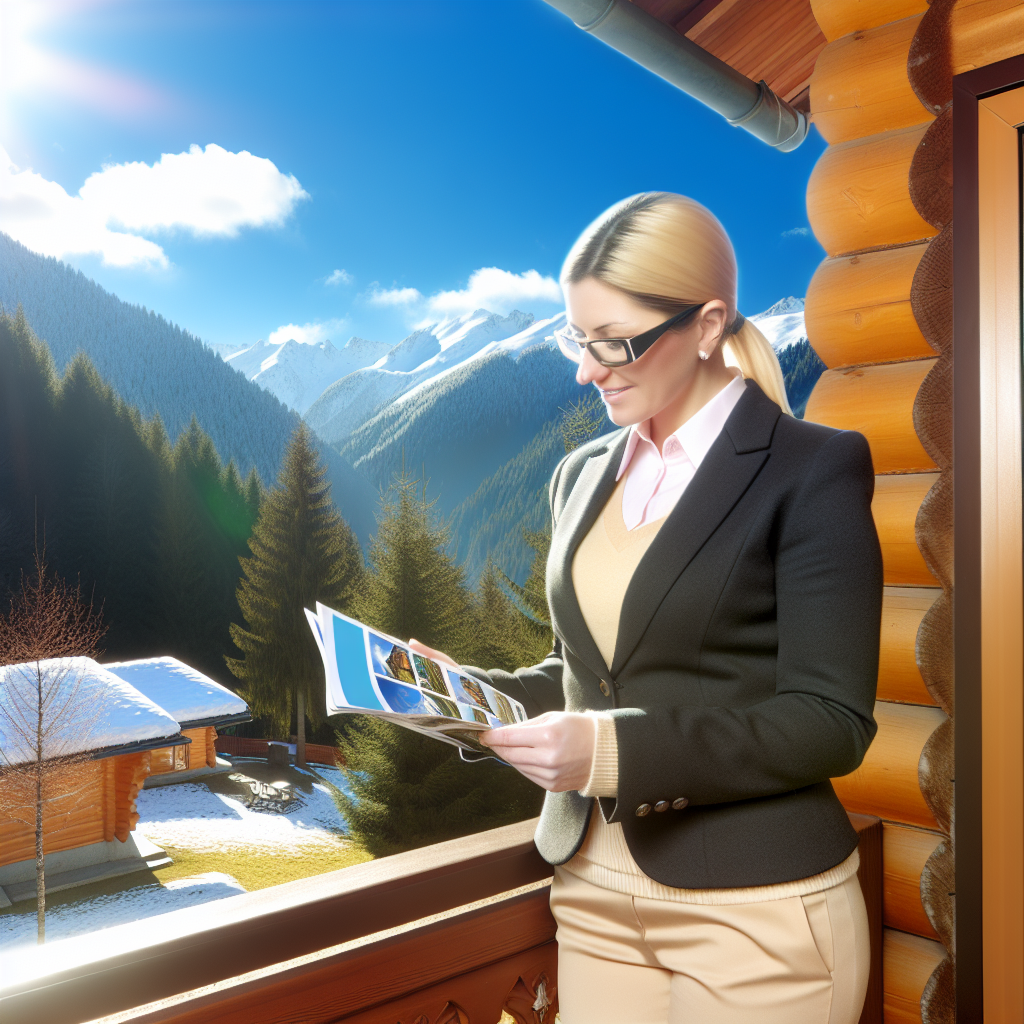Understanding the Importance of Location in Mountain Retreat Properties
Proximity to Amenities
Location significantly influences your mountain retreat experience.
Access to essential amenities is crucial for convenience.
Consider how far you are from grocery stores and healthcare facilities.
Additionally, proximity to recreational spots enhances your stay.
Choose areas near hiking trails, ski resorts, or lakes.
Climate Considerations
The climate of the region affects your investment.
Different mountain areas experience varying weather patterns.
Research the seasonal changes to anticipate property care needs.
Warmer regions may allow for year-round activities.
Conversely, colder areas may offer winter sports opportunities.
Scenic Views
Natural beauty often drives the appeal of mountain properties.
Choosing a location with stunning views enhances relaxation.
Look for properties that provide panoramic vistas.
Views can significantly influence property value over time.
Therefore, take the time to explore multiple locations.
Safety and Accessibility
Safety should be a top priority when selecting a location.
Research the area’s crime rates and emergency services.
Accessibility is also essential for a seamless retreat experience.
Evaluate the quality of roads leading to your property.
Check if the area has good winter maintenance services.
Community Vibe
The community surrounding your property shapes your experience.
Engage with locals to understand the area’s culture.
Look for vibrant communities that offer events and activities.
A welcoming atmosphere enhances your mountain retreat.
Consider if the location aligns with your lifestyle preferences.
Evaluating Property Types: Cabins, Cottages, and Luxury Homes
Understanding Cabins
Cabins are often rustic and provide a cozy atmosphere.
They typically feature wood construction and natural materials.
These properties are ideal for nature lovers and outdoor enthusiasts.
Many cabins offer beautiful views and immediate access to hiking trails.
Exploring Cottages
Cottages exude charm and comfort, often featuring quaint designs.
They usually cater to smaller groups, making them perfect for couples or small families.
Some cottages are located near scenic lakes or rivers.
Additionally, they can provide access to fishing, kayaking, and swimming activities.
Luxury Homes in the Mountains
Luxury homes offer spacious living and high-end finishes.
These properties often include expansive decks and large windows.
Such features allow for breathtaking mountain views and natural light.
Moreover, many luxury homes come with modern amenities and technology.
Choosing the Right Property Type
Consider your lifestyle and how often you’ll use the property.
This choice can significantly influence your ability to relax and enjoy the retreat.
Evaluate your budget alongside the property type as well.
Some types may require additional maintenance or renovation costs.
Factors to Assess When Evaluating Properties
- Location and accessibility to nearby activities
- Size and layout of the property
- Surrounding environment and natural attractions
- Potential for rental income if not used year-round
Ultimately, each property type serves a different purpose.
Knowing your preferences helps you make an informed decision.
The Role of Seasonal Considerations in Property Use and Value
Understanding Seasonal Impacts
Seasonal changes significantly affect mountain retreat properties.
Winter sports enthusiasts seek properties near ski resorts.
Summer brings hikers and nature lovers to the mountains.
Understanding these seasonal patterns is crucial for buyers.
Property Usage Throughout the Year
Consider how you will use your property in different seasons.
Winter months may offer opportunities for snowboarding or skiing.
Spring and summer allow for hiking, fishing, and exploring.
Fall showcases beautiful foliage, attracting many visitors.
Effect on Property Value
Seasonality directly influences property value and demand.
Properties with year-round appeal generally retain higher values.
For instance, a ski lodge may see fluctuating demand in summer.
Conversely, cabins by lakes can attract buyers year-round.
Investing Wisely
Investors must analyze seasonal trends for informed decisions.
Look for properties that enhance year-round enjoyment.
Seasonal rental potential can also boost investment value.
Properties with diverse amenities appeal to a broader audience.
Planning for Maintenance and Upgrades
Seasonal changes may necessitate different maintenance considerations.
Winter can bring heavy snow, affecting roofs and driveways.
Summer heat might require air conditioning or insulation upgrades.
Planning for these factors ensures your property remains in top condition.
Delve into the Subject: Exploring The Appeal Of Secluded Luxury Mountain Retreat Homes
Financial Planning
Budgeting for Purchase
Start by determining your total budget for the mountain retreat property.
Consider factors such as location, size, and amenities.
Next, assess your financing options, including loans and mortgages.
Gather financial documents to present to lenders during the application process.
Shop around for the best interest rates and terms from different lenders.
Calculate your down payment based on the purchase price and your savings.
Factor in closing costs, which can add a few thousand dollars to your expenses.
Use a mortgage calculator to estimate monthly payments based on various scenarios.
Ongoing Costs
Prepare for ongoing costs associated with property ownership.
Estimate property taxes based on local rates and property assessments.
Include homeowners association fees if the property is within a community.
Consider homeowners insurance to protect your investment from unforeseen events.
Plan for maintenance and repairs that will arise over time.
Factor in utility costs, which may vary seasonally in mountain areas.
Budget for seasonal services such as snow removal or landscaping.
Emergency Fund
Establish an emergency fund for unexpected expenses.
Set aside at least three to six months’ worth of expenditures.
This fund will help cover emergencies without derailing your plans.
Long-Term Financial Goals
Align your mountain property purchase with long-term financial goals.
Consider how this investment fits within your overall financial strategy.
Evaluate potential rental income if you plan to rent the property.
Reflect on the appreciation potential of the property over time.
Regularly review and adjust your budget to accommodate changing circumstances.
Explore Further: Waterfront Real Estate Trends Every Buyer Should Know About
Finding a Specialized Real Estate Agent Familiar with Mountain Properties
Importance of a Specialized Agent
Choosing the right real estate agent is crucial for first-time buyers.
A specialized agent understands mountain properties better than general agents.
They have knowledge about local regulations, access routes, and environmental factors.
This expertise helps you find the best-fit mountain retreat for your needs.
Researching Potential Agents
Start by researching agents who specialize in mountain properties.
Check online reviews and testimonials to gauge their reputation.
Look for agents with certifications in mountain or rural properties.
Networking with local residents can also provide valuable recommendations.
Conducting Interviews
Once you have a list of potential agents, set up interviews.
Ask about their experience in mountain real estate transactions.
Inquire about their familiarity with the specific area you’re interested in.
Gauge their understanding of your unique needs and preferences.
Assessing Compatibility
Your agent should communicate effectively and be easy to reach.
Evaluate their responsiveness to your questions and concerns.
It’s vital that you feel comfortable discussing your goals with them.
A good rapport can significantly improve your home-buying experience.
Questions to Ask
- How many mountain properties have you sold in the last year?
- What challenges have you faced in mountain property transactions?
- How do you handle negotiations in unique mountain settings?
- Can you provide references from previous mountain property clients?
Finalizing Your Choice
After interviews, compare your options based on expertise and comfort level.
Choose an agent who aligns with your vision for the mountain retreat.
A specialized agent will guide you through the buying process effectively.
Delve into the Subject: The Importance of Privacy in High-End Real Estate Transactions

Inspecting for Unique Features
Accessibility
Accessibility is a major consideration when choosing a mountain retreat property.
Check the quality of the roads leading to the property.
Ensure that the location is reachable year-round, not just in summer.
Look for properties with proper drainage to prevent flooding in rainy seasons.
Assess the parking situation; adequate space is essential for guests.
Consider trail access for hiking and outdoor activities as well.
Evaluate how close your retreat is to essential services, such as grocery stores.
Views
A breathtaking view can significantly enhance your mountain retreat experience.
Look for properties that provide panoramic views of the mountains and valleys.
Be aware of possible obstructions from nearby trees or buildings.
Taking time to visit the property at different times of day is crucial.
This helps to assess how the light and scenery change throughout the day.
Consider views from both main living areas and bedrooms for optimal enjoyment.
Ultimately, a beautiful view can increase rental potential if you plan to invest.
Environmental Impact
Understanding the environmental impact of the property is essential.
Research any local regulations regarding land use and conservation.
Assess any potential risks for erosion, especially on sloped properties.
Consult with professionals to evaluate the wildlife in the area.
Also, look for signs of invasive species or environmental degradation.
Consider the impact of nearby developments on the natural beauty of the area.
Finally, ask about plans for future development in the surrounding region.
See Related Content: What Buyers Should Know About Tax Benefits Of Country Estates
Understanding Zoning and Land Use Regulations in Mountain Areas
Introduction to Zoning Regulations
Zoning regulations dictate how land can be used in specific areas.
Mountain areas often have unique zoning laws to protect natural resources.
These laws influence building types and property uses.
Understanding these regulations is essential for first-time buyers.
Types of Zoning
Residential zoning limits land use to housing development.
Commercial zoning designates areas for businesses and shops.
Additionally, agricultural zoning supports farming activities.
Some zones may be exclusively for recreational purposes.
Land Use Regulations
Land use regulations focus on habitat preservation and conservation.
They may govern the types of construction allowed in certain zones.
Additionally, they address environmental impacts of development.
These regulations often include restrictions on tree removal and grading.
Permits and Approvals
Before starting any project, check the local zoning office.
You’ll need specific permits for construction or significant landscaping.
Applications typically require detailed project plans.
Engaging with the local planning board is commonly necessary.
Impact of Zoning on Property Value
Zoning can significantly influence property value in mountain areas.
Properties in desirable zones tend to appreciate faster.
On the other hand, restrictive zoning can limit potential uses.
This aspect can affect your investment strategy as a buyer.
Researching Local Regulations
Start by visiting local government websites for zoning information.
Speak with local real estate agents to gain insights.
Engaging a local attorney specializing in land use can be beneficial.
Local community organizations may provide additional resources.
Understanding Variances
In some cases, buyers may seek variances from zoning regulations.
A variance allows deviations from standard zoning requirements.
This process typically requires demonstrating hardship.
It is essential to understand the implications of obtaining a variance.
Key Considerations for Buyers
Being informed about zoning and land use regulations is crucial.
Knowledge helps buyers make better property decisions.
Always research thoroughly before purchasing mountain retreat properties.
Understanding these factors can lead to a successful investment.
Preparing for Potential Challenges
Weather Considerations
Mountain weather can be unpredictable and extreme.
Research typical weather patterns for the region.
Winter weather may require special preparations.
Consider properties with adequate insulation and heating.
Additionally, review snow removal and maintenance services.
Understanding seasonal changes helps in planning visits.
Always check local forecasts before any trip.
Wildlife Encounters
Expect to share your space with local wildlife.
Research which animals inhabit the area.
Learn about safe interactions with wildlife.
Consider installing bear-proof trash containers.
Maintain a safe distance from all wildlife.
Educate guests about wildlife safety protocols.
Understanding wildlife helps mitigate potential risks.
Maintenance Needs
Mountain properties require regular maintenance.
Check the roof for snow and ice accumulation regularly.
Inspect plumbing systems to prevent freezing.
Consider hiring local professionals for upkeep.
Develop a routine for exterior maintenance checks.
Be aware of potential pest issues in secluded areas.
Regular maintenance keeps your retreat safe and enjoyable.
Additional Resources
Best Ski Towns in Colorado – Colorado Buyers Agents Association




